#yoruba culture and tradition
Text
Fatherland New York - Enjoy the African Experience
Fatherland New York, a mission-driven global enterprise that fosters vibrant economic, social, and culture to increase opportunity for people of Africans worldwide. We are creating global economic opportunities for the African and African Descendants, yielding significant revenue for the governments via tax payments from the enterprises, tourists, residents, and employees.
#african lifestyle in new york#black culture new york#afro american culture#yoruba culture and tradition#new york african#africa culture and traditions#fatherland new york#spiritual pilgrimage new york
1 note
·
View note
Text

Egungun masker, Nigeria, by Dan Kitwood
#yoruba#nigeria#western africa#africa#traditional clothing#traditional fashion#cultural clothing#folk clothing
285 notes
·
View notes
Text
Watching this video of “Oyinbo” people extolling Yoruba culture should make us know why the Yoruba Cultural Center has been established for our Yoruba community here in Dallas - to promote and establish Yoruba culture as second to none from the African continent. Many of us on this platform like to proclaim how much they love and cherish our culture, but how many of us have bothered to visit this establishment or enroll their children in its programs such as the online Yoruba language school or Drum and Dance classes. It is not too late to make amends. Visit www.yorubacenter.org to learn more about the programs of the Yorubs Cultural Center, and mark your calendar for the last Sunday of each month at 4pm, to attend one of the special cultural evenings at the Center. The Yoruba Cultural Center is a gem in our community - an oasis in an arid cultural and artistic landscape of North Texas for all persons of Yoruba and African descent.
2 notes
·
View notes
Text
Fantasy Guide to Building A Culture

Culture is defined by a collection of morals, ethics, traditions, customs and behaviours shared by a group of people.
Hierarchy and Social Structures

Within every culture, there is a hierarchy. Hierarchies are an important part of any culture, usually do ingrained that one within the culture wouldn't even question it. Hierarchy can be established either by age, gender or wealth and could even determine roles within their society. Sometimes hierarchy can may be oppressive and rigid whilst other times, ranks can intermingle without trouble. You should consider how these different ranks interact with one another and whether there are any special gestures or acts of deference one must pay to those higher than them. For example, the Khasi people of Meghalaya (Northern India), are strictly matrillineal. Women run the households, inheritance runs through the female line, and the men of the culture typically defer to their mothers and wives. Here are a few questions to consider:
How is a leader determined within the culture as a whole and the family unit?
Is the culture matriarchal? Patriarchal? Or does gender even matter?
How would one recognise the different ranks?
How would one act around somebody higher ranking? How would somebody he expected to act around somebody lower ranking?
Can one move socially? If not, why? If so, how?
Traditions and Customs
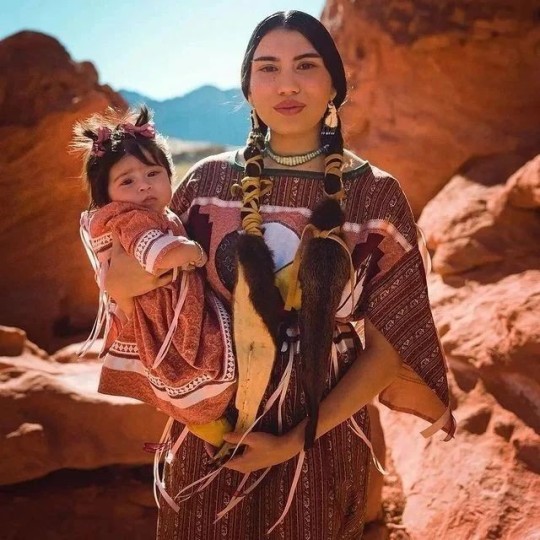
Traditions are a staple in any culture. These can be gestures or living life a certain way or to the way a certain person should look. Traditions are a personal detail to culture, they are what make it important. Tradition can dictate how one should keep their home, run their family, take care of their appearance, act in public and even determine relationship. Tradition can also be a double edged sword. Traditions can also be restrictive and allow a culture to push away a former member if they do not adhere to them, eg Traditional expectations of chastity led to thousands of Irish women being imprisoned at the Magdelene Laundries. Customs could be anything from how one treats another, to how they greet someone.
How important is tradition?
What are some rituals your culture undertakes?
What are some traditional values in your world? Does it effect daily life?
Are there any traditions that determine one's status?
Values and Opinions
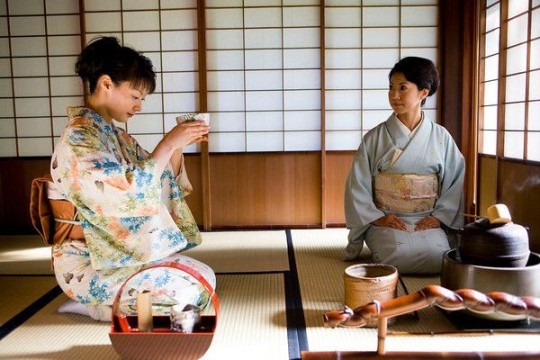
Values and Opinions are the bread and butter of any culture. This is the way your culture sees the world and how they approach different life hurdles. These may differ with other cultures and be considered odd to outsiders, what one culture may value another may not and what opinion another holds, one may not. There will be historical and traditional reasons to why these values and opinions are held. Cultures usually have a paragon to which they hold their members to, a list of characteristics that they expect one to if not adhere to then aspire to. The Yoruba people value honesty, hard work, courage and integrity. Here are some questions to consider?
How important are these ethics and core values? Could somebody be ostracised for not living up to them?
What are some morals that clash with other cultures?
What does your culture precieved to be right? Or wrong?
What are some opinions that are considered to be taboo in your culture? Why?
Dress Code

For many cultures, the way somebody dresses can be important. History and ethics can effect how one is meant to be dressed such as an expectation of chastity, can impose strict modesty. While other cultures, put more importance on details, the different sorts of clothes worn and when or what colour one might wear. The Palestinian people (من النهر إلى البحر ، قد يكونون أحرارا) denoted different family ties, marriage status and wealth by the embroidery and detailing on their thoub.
Are there traditional clothes for your world? Are they something somebody wears on a daily basis or just on occasion?
Are there any rules around what people can wear?
What would be considered formal dress? Casual dress?
What would happen if somebody wore the wrong clothes to an event?
Language

Language can also be ingrained as part of a Culture. It can be a specific way one speaks or a an entirely different language. For example, in the Southern States of America, one can engage in a sort of double talk, saying something that sounds sweet whilst delivering something pointed. Bless their heart. I have a post on creating your own language here.
Arts, Music and Craft

Many cultures are known for different styles of dance, their artwork and crafts. Art is a great part of culture, a way for people to express themselves and their culture in art form. Dance can be an integral part of culture, such as céilí dance in Ireland or the Polka in the Czech Republic. Handicrafts could also be important in culture, such as knitting in Scottish culture and Hebron glass in Palestine. Music is also close to culture, from traditional kinds of singing such as the White Voice in Ukraine and the playing of certain instruments such as the mvet.
Food and Diet
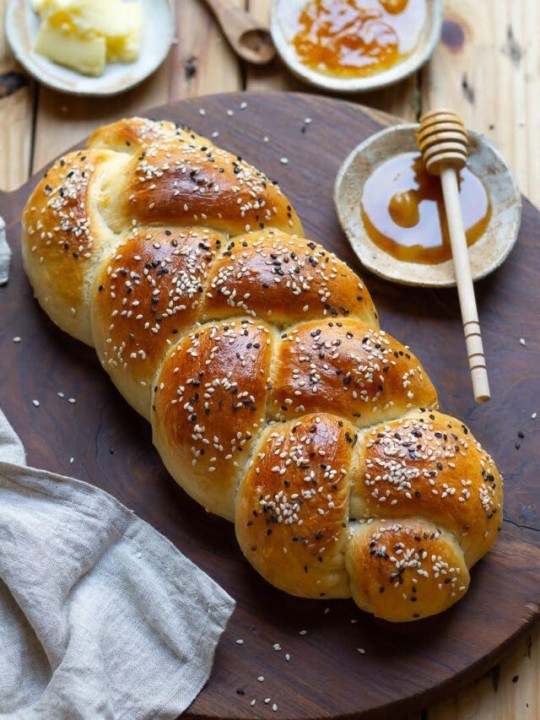
The way a culture prepares or intakes or treats certain foods are important to a culture. In some cultures, there is a diet yo adhere to, certain foods are completely banned. With Jewish culture, pork is prohibited along with fish such as sturgeon, along with shellfish and certain fowl. Meat must also be prepared in a certain way and animal byproducts such as dairy, must never be created or even eaten around this meat. This is known as kosher. The way one consumes food is also important to culture. In some cultures, only certain people may eat together. Some cultures place important on how food is eaten. In Nigerian culture, the oldest guests are served first usually the men before the women. In Japanese culture, one must say 'itadakimasu' (I recieve) before eating. Culture may also include fasting, periods of time one doesn't intake food for a specific reason.
What are some traditional dishes in your world?
What would be a basic diet for the common man?
What's considered a delicacy?
Is there a societal difference in diet? What are the factors that effect diet between classes?
Is there any influence from other cuisines? If not, why not? If so, to what extent?
What would a typical breakfast contain?
What meals are served during the day?
What's considered a comfort food or drink?
Are there any restrictions on who can eat what or when?
Are there any banned foods?
What stance does your world take on alcohol? Is it legal? Can anybody consume it?
Are there any dining customs? Are traditions?
Is there a difference in formal meals or casual meals? If so, what's involved?
Are there any gestures or actions unacceptable at the dinner table?
How are guests treated at meals? If they are given deference, how so?
#Fantasy Guide to Building A Culture#As promised#If I fail my German exam I'm blaming ye#Culture#Building a culture#Fantasy Guide#WorldBuilding#WorldBuilding guide#WorldBuilding help#Writing help#writing#writeblr#writing resources#writing reference#writing advice#ask answered questions#writers#writing advice writing resources#spilled ink#ask answered
9K notes
·
View notes
Text
Some historical context for Olrox

Okay, let me prephase this with one important message: Castlevania Nocturne made me really happy by making the plot all about colonialism, as colonialism and its fallout and how it influences us to this day is a topic that I am very passionate about. We do not talk enough about it. The US does not talk enough about it because it could make white people feel uncomfortable. And here in Germany we do not talk about it, because we act as if this had nothing to do with us at all.
But the show talks about it and I love it.
And I honestly also gotta say that I love that the BI_PoC character have a concrete cultural heritage. Olrox is Aztec, Annette is Yoruba, and Drolta is Egyptian. Other shows: Please take notes!
But let's talk Olrox, because he is so fucking interesting and amazing!
We know about him that he is Aztec and also that he is 250 years old. Or roughly that old by the time he kills Julia. Which would put either his birth or his turning somewhere around 1530.
Now, the fall of the Aztec Empire has a very exact date: August 13th, 1521. But you should keep in mind that this does not mean that on that day the Aztec's are extinct. To this day there is still 1,5 million people speaking Nahuatl, the language of the Aztecs, and preserving some of the Aztec cultural traditions. It was just that on that day the empire construct fell to Cortez and the Spaniad conquistadors and a lot of Aztecs went into exile to flee the genocide that Cortez was bringing upon them.
The question of course is: Was Olrox still human at this time or was he already a vampire? From his dialogue it is clear that he was at least alive and grown enough to remember the fall of the empire and the distruction Cortez and his men brought upon them. But you can bet it was very traumatic.
I also am assuming he was turned by a white man. Because so far my assumption is that vampirism is an old world thing that got brought to the new world through colonialism. (Mostly because in Dracula's court we do not see any new world vampires.)

Now, the other interesting thing is what he says about his dead lover. The one Julia killed. So, first the "town in Massachusetts" he speaks about is clearly Stockbridge. Which was the town in which many Mohicans have settled during the colonial times, as well as other people from the Iroquois Nations. Now, it should be noted that the Mohicans were not part of the Iroquois alliance and in fact went to war with the Iroquois, but by the time colonialism really geared up there was some cooperation between the Mohicans and Iroquois.
Due to this they were in an alliance with the Oneida (who were part of the Iroquois) by the time of the Revolutionary war. Now, the Revolutionary War created a lot of conflict between the Iroquois nations, because they did not agree which side they should fight on. Of course both sides promised that they could keep their land, but the Mohawk, Onondaga, Cayuga, and Seneca did not trust the colonists and hence sided with the British, while the Oneida and Tuscarora (and through them also the Mohicans) sided with the Colonists.
And the dead lover clearly was among those siding with the colonists. Now, a quick refresher for the non-Americans (and the Americans who slept to history class, which is understandable). The Revolutionary War lasted from April 19, 1775 to September 3, 1783 (which, yes, also means that Julia and Richter probably were in the US during the war the entire time and the "evil" Julia was fighting probably was linked to it). And of course we all know how it ended for the Indigenous people: The colonists won, countless Indigenous folks died on both sides, only to get booted of their land soon after. The Oneida und Mohicans were made to move westwards not soon after the war ended. So, yes, Olrox would have seen that happen.

Now, an interesting thing in his dialogue was when Erzebet said: "We will create a new world." To which he replies: "I have heard that one before." And she says: "This time we are going to make it to last."
And the big question is to what this is refering. Is it refering to the colonialization or is it refering to the revolutionary war? Or something entirely different. In both cases it would be possible. And yes, the American Revolution definitely were claiming to create a new world. But was it that what he refered to or something else?
Well, never the less: Interesting character. Really good writing.
#castlevania#castlevania nocturne#castlevania netflix#castlevania nocturne spoilers#castlevania olrox#american history#history#colonialism#colonial history#aztec
4K notes
·
View notes
Text
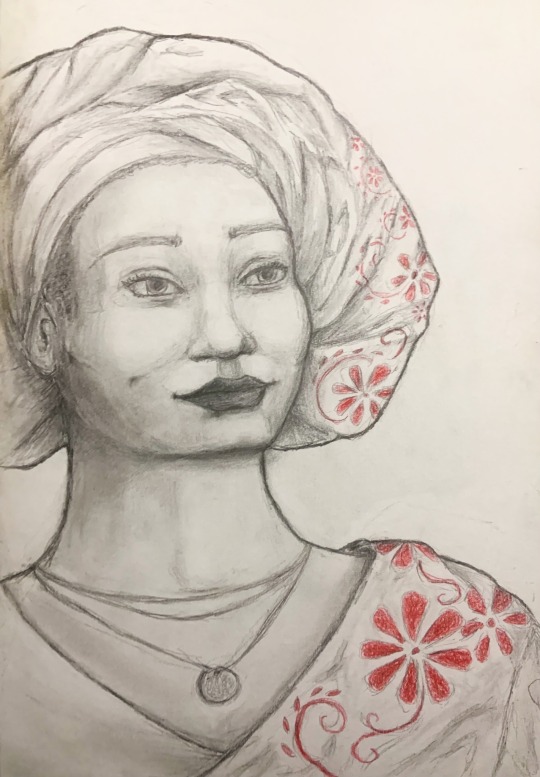
Drawing of a Yoruba woman. Very neat culture, I’d like to learn more about them, plus their traditional clothes are very beautiful. I didn’t do the head piece right but it turned out okay overall I think. I’d like to do more African inspired drawings cause there’s a lot of cool stuff going there culturally (side note: did you guys know Africa is the most genetically diverse continent? Like it makes sense but we don’t really talk about Africa in a way that’s really reflective of the amount of ethnic diversity there). Hopefully I can find some good resources on some of the places, but it’s not easy. Anyway I hope y’all like this.
#africa#african#nigeria#yoruba#traditional art#art on tumblr#art account#art#drawing#portrait art#portrait#culture#fun facts#traditional clothing#traditional illustration#illustration#kazhanko.art
1 note
·
View note
Text
It is important to remember that as far as art history goes, that it is patently untrue that realism only became humanly possible with the development of linear perspective in Europe thanks to Brunelleschi (a commonly repeated myth in lower division art education), and that examples of artistic realism as we know it today has long existed in many, much older art traditions. West African arts cultures are a great example to work off of. (i.e. Yoruba)

This Yoruba bust (or Ife Head) is dated to the 12th-14th centuries.
This misunderstanding also deeply, unfortunately, and inaccurately mischaracterizes traditional arts in African cultures as being “less developed” for being more stylized, as if they cannot figure out realism due to difficulty (lmao?), which simply is not the case.
I don’t often make original posts like this, but I’ve rarely seen this addressed outside of art history land, and it really bothers me!!!
2K notes
·
View notes
Photo

Happy Sunday Fam🤗Don’t forget to stream YAH!🔊and tag me in ur Video for #repost #yahseason 🔥🔥 #sunday #yah #afrobeats #culture #fashion #africa #yoruba #tradition #trending (at Yah!) https://www.instagram.com/p/Cd2D_nWITMB/?igshid=NGJjMDIxMWI=
0 notes
Text
Reading list for Afro-Herbalism:
A Healing Grove: African Tree Remedies and Rituals for the Body and Spirit by Stephanie Rose Bird
Affrilachia: Poems by Frank X Walker
African American Medicine in Washington, D.C.: Healing the Capital During the Civil War Era by Heather Butts
African American Midwifery in the South: Dialogues of Birth, Race, and Memory by Gertrude Jacinta Fraser
African American Slave Medicine: Herbal and Non-Herbal Treatments by Herbert Covey
African Ethnobotany in the Americas edited by Robert Voeks and John Rashford
Africanisms in the Gullah Dialect by Lorenzo Dow Turner
Africans and Native Americans: The Language of Race and the Evolution of Red-Black Peoples by Jack Forbes
African Medicine: A Complete Guide to Yoruba Healing Science and African Herbal Remedies by Dr. Tariq M. Sawandi, PhD
Afro-Vegan: Farm-Fresh, African, Caribbean, and Southern Flavors Remixed by Bryant Terry
Barracoon: The Story of the Last “Black Cargo” by Zora Neale Hurston
Big Mama’s Back in the Kitchen by Charlene Johnson
Big Mama’s Old Black Pot by Ethel Dixon
Black Belief: Folk Beliefs of Blacks in America and West Africa by Henry H. Mitchell
Black Diamonds, Vol. 1 No. 1 and Vol. 1 Nos. 2–3 edited by Edward J. Cabbell
Black Faces, White Spaces: Reimagining the Relationship of African Americans to the Great Outdoors by Carolyn Finney
Black Food Geographies: Race, Self-Reliance, and Food Access in Washington, D.C. by Ashanté M. Reese
Black Indian Slave Narratives edited by Patrick Minges
Black Magic: Religion and the African American Conjuring Tradition by Yvonne P. Chireau
Black Nature: Four Centuries of African American Nature Poetry edited by Camille T. Dungy
Blacks in Appalachia edited by William Turner and Edward J. Cabbell
Caribbean Vegan: Meat-Free, Egg-Free, Dairy-Free Authentic Island Cuisine for Every Occasion by Taymer Mason
Dreams of Africa in Alabama: The Slave Ship Clotilda and the Story of the Last Africans Brought to America by Sylviane Diouf
Faith, Health, and Healing in African American Life by Emilie Townes and Stephanie Y. Mitchem
Farming While Black: Soul Fire Farm’s Practical Guide to Liberation on the Land by Leah Penniman
Folk Wisdom and Mother Wit: John Lee – An African American Herbal Healer by John Lee and Arvilla Payne-Jackson
Four Seasons of Mojo: An Herbal Guide to Natural Living by Stephanie Rose Bird
Freedom Farmers: Agricultural Resistance and the Black Freedom Movement by Monica White
Fruits of the Harvest: Recipes to Celebrate Kwanzaa and Other Holidays by Eric Copage
George Washington Carver by Tonya Bolden
George Washington Carver: In His Own Words edited by Gary Kremer
God, Dr. Buzzard, and the Bolito Man: A Saltwater Geechee Talks About Life on Sapelo Island, Georgia by Cornelia Bailey
Gone Home: Race and Roots through Appalachia by Karida Brown
Ethno-Botany of the Black Americans by William Ed Grime
Gullah Cuisine: By Land and by Sea by Charlotte Jenkins and William Baldwin
Gullah Culture in America by Emory Shaw Campbell and Wilbur Cross
Gullah/Geechee: Africa’s Seeds in the Winds of the Diaspora-St. Helena’s Serenity by Queen Quet Marquetta Goodwine
High on the Hog: A Culinary Journey from Africa to America by Jessica Harris and Maya Angelou
Homecoming: The Story of African-American Farmers by Charlene Gilbert
Hoodoo Medicine: Gullah Herbal Remedies by Faith Mitchell
Jambalaya: The Natural Woman’s Book of Personal Charms and Practical Rituals by Luisah Teish
Just Medicine: A Cure for Racial Inequality in American Health Care by Dayna Bowen Matthew
Leaves of Green: A Handbook of Herbal Remedies by Maude E. Scott
Like a Weaving: References and Resources on Black Appalachians by Edward J. Cabbell
Listen to Me Good: The Story of an Alabama Midwife by Margaret Charles Smith and Linda Janet Holmes
Making Gullah: A History of Sapelo Islanders, Race, and the American Imagination by Melissa Cooper
Mandy’s Favorite Louisiana Recipes by Natalie V. Scott
Medical Apartheid: The Dark History of Medical Experimentation on Black Americans from Colonial Times to the Present by Harriet Washington
Mojo Workin’: The Old African American Hoodoo System by Katrina Hazzard-Donald
Motherwit: An Alabama Midwife’s Story by Onnie Lee Logan as told to Katherine Clark
My Bag Was Always Packed: The Life and Times of a Virginia Midwife by Claudine Curry Smith and Mildred Hopkins Baker Roberson
My Face Is Black Is True: Callie House and the Struggle for Ex-Slave Reparations by Mary Frances Berry
My Grandmother's Hands: Racialized Trauma and the Pathway to Mending Our Hearts and Bodies by Resmaa Menakem
On Her Own Ground: The Life and Times of Madam C.J. Walker by A'Lelia Bundles
Papa Jim’s Herbal Magic Workbook by Papa Jim
Places for the Spirit: Traditional African American Gardens by Vaughn Sills (Photographer), Hilton Als (Foreword), Lowry Pei (Introduction)
Post Traumatic Slave Syndrome by Dr. Joy DeGruy
Rooted in the Earth: Reclaiming the African American Environmental Heritage by Diane Glave
Rufus Estes’ Good Things to Eat: The First Cookbook by an African-American Chef by Rufus Estes
Secret Doctors: Ethnomedicine of African Americans by Wonda Fontenot
Sex, Sickness, and Slavery: Illness in the Antebellum South by Marli Weiner with Mayzie Hough
Slavery’s Exiles: The Story of the American Maroons by Sylviane Diouf
Soul Food: The Surprising Story of an American Cuisine, One Plate at a Time by Adrian Miller
Spirituality and the Black Helping Tradition in Social Work by Elmer P. Martin Jr. and Joanne Mitchell Martin
Sticks, Stones, Roots & Bones: Hoodoo, Mojo & Conjuring with Herbs by Stephanie Rose Bird
The African-American Heritage Cookbook: Traditional Recipes and Fond Remembrances from Alabama’s Renowned Tuskegee Institute by Carolyn Quick Tillery
The Black Family Reunion Cookbook (Recipes and Food Memories from the National Council of Negro Women) edited by Libby Clark
The Conjure Woman and Other Conjure Tales by Charles Chesnutt
The Home Place: Memoirs of a Colored Man’s Love Affair with Nature by J. Drew Lanham
The Jemima Code: Two Centuries of African American Cookbooks by Toni Tipton-Martin
The President’s Kitchen Cabinet: The Story of the African Americans Who Have Fed Our First Families, from the Washingtons to the Obamas by Adrian Miller
The Taste of Country Cooking: The 30th Anniversary Edition of a Great Classic Southern Cookbook by Edna Lewis
The Tuskegee Syphilis Study: An Insiders’ Account of the Shocking Medical Experiment Conducted by Government Doctors Against African American Men by Fred D. Gray
Trace: Memory, History, Race, and the American Landscape by Lauret E. Savoy
Vegan Soul Kitchen: Fresh, Healthy, and Creative African-American Cuisine by Bryant Terry
Vibration Cooking: Or, The Travel Notes of a Geechee Girl by Vertamae Smart-Grosvenor
Voodoo and Hoodoo: The Craft as Revealed by Traditional Practitioners by Jim Haskins
When Roots Die: Endangered Traditions on the Sea Islands by Patricia Jones-Jackson
Working Conjure: A Guide to Hoodoo Folk Magic by Hoodoo Sen Moise
Working the Roots: Over 400 Years of Traditional African American Healing by Michelle Lee
Wurkn Dem Rootz: Ancestral Hoodoo by Medicine Man
Zora Neale Hurston: Folklore, Memoirs, and Other Writings: Mules and Men, Tell My Horse, Dust Tracks on a Road, Selected Articles by Zora Neale Hurston
The Ways of Herbalism in the African World with Olatokunboh Obasi MSc, RH (webinar via The American Herbalists Guild)
1K notes
·
View notes
Text
Haven't seen anyone talk ab it but Twin Drums studio (the majority of its core team of nine are Black, female, and queer) is developing a (successfully kickstarted!) Afro-fantasy game called The Wagadu Chronicles and I'm rly excited for its launch and you should check out their links


"This is a very personal project [...]" Twin Drums' founder and creative director Allan Cudicio explains. "For me, that meant looking back at my career realising how hard I had to fight just to get some Black characters in the games I was working on, or to get the artists to have an African-inspired setting and not the 40th European, French/Venetian inspired setting. It was very much a personal fight I had to go through."
"The game is political," Cudicio continued, describing the game as 'immersed in a Black, queer positive source'. "Too often we hear in our industry 'We don't do politics', which is fascinating. It's better to embrace what politics you have and for us it's anti-colonial, it's feminist, it's anti-ableist."
"[The Wagadu Chronicles] is an African-inspired fantasy sandbox MMORPG, so you travel through this African-inspired world, doing what you could call life skills: farming, fishing, crafting," Cudicio said. "It also has combat, mostly PVE, inspired by single player turn-based RPGs. Community is very important. Every village you see in The Wagadu Chronicles has been created, nurtured and expanded by communal efforts, which again is inspired by traditions of the continent. (x)

Wagadu removes the lens of medieval European influences in fantasy by being based entirely on African mythology. “A lot of games is nonconsensual killing and getting rewarded for it, whereas in Wagadu, and with nature, it’s about consent,” explains Cudicio. “That’s like traditional Yoruba hunters of the south of Nigeria. When they hunt, they chant a blessing and ask permission for the animal. In some cultures, you also ask for forgiveness or thank them afterwards. I think it’s important to rethink hunting not as something that’s very Western and capitalist — which is about the domination and destruction of nature — whereas in African societies it’s about balancing and respecting it.”
Suffice to say, being set in an African fantasy world also means players will only be able to play as Black characters, with a large selection of African names to choose from. “I know if people have that freedom, then white players will be lazy and just pick white people, and not challenge themselves, and then the setting will not be Black anymore,” says Cudicio. “To keep Wagadu African, there needs to be an artistic direction to say, like, this is a Black world, so everybody who plays has these features.” (x)
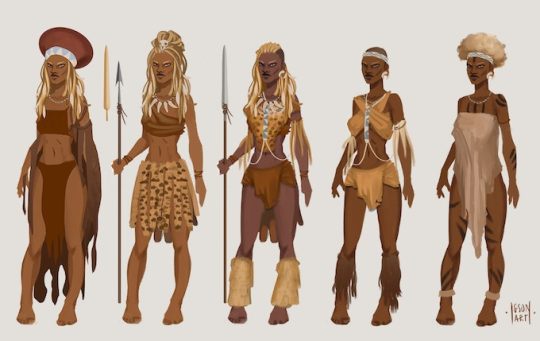
There have been black people in fantasy previous of course, but often their stripped of any tangible African influence. “I think what happens is you get very Western fantasy with people painted black, basically. There’s metal armour or a French looking knight, just with an afro or black skin. It’s good, it’s better than nothing, but we need to move a step further. It’s a very Eurocentric blackness.” (x)
#DOESN'T IT LOOK SO GOOD !!!!!#i'm surprised no one is promoting this yet :')#pcg#the wagadu chronicles#twin drums#pc games#video games#game development#game art#gaming#afrofantasy
359 notes
·
View notes
Text

Diverse African Cultures and Beliefs about Life After Death
Introduction
Africa is a continent rich in cultural diversity and traditions, and this extends to its beliefs about life after death. Across the vast expanse of Africa, there are numerous cultures, each with its own unique perspective on what happens when life on Earth comes to an end. In this article, we will explore some of the fascinating beliefs about life after death that are deeply ingrained in African societies.
1. The Ancestor Veneration of the Akan People (Ghana and Ivory Coast)
In Akan culture, which encompasses the Ashanti, Fante, and Akuapem people, ancestors hold a significant place in the spiritual realm. They believe that after death, the souls of the departed continue to exist and influence the lives of their living descendants. Ancestor veneration involves rituals, offerings, and prayers to keep these spirits content and receive guidance and protection from them.
2. The Reincarnation Belief of the Yoruba People (Nigeria, Benin, and Togo)
The Yoruba people have a belief in reincarnation, where it is thought that the soul of a deceased person is reborn into a new body. The deceased's name may even be given to the newborn as a way of connecting the past and present lives. The Yoruba also believe that the deceased can communicate with the living in dreams and visions.
3. The Eternal Journey in Ancient Egyptian Culture (Egypt)
Ancient Egypt is renowned for its elaborate beliefs about the afterlife. Egyptians believed in a complex journey after death, where the soul faced trials and judgment before reaching the eternal paradise known as the "Field of Reeds." To ensure a successful afterlife, elaborate burial rituals and tombs were constructed, including the famous pyramids.
4. The Importance of Ancestral Connection in Zulu Beliefs (South Africa)
Among the Zulu people, the connection to ancestors is deeply cherished. It is believed that after death, the ancestors continue to play a role in the lives of their descendants. Rituals such as sacrifices and ceremonies are performed to honor and seek guidance from these ancestral spirits. Displeasing the ancestors can bring misfortune, while pleasing them can bring blessings.
5. The Dualistic Beliefs of the Dogon People (Mali)
The Dogon people have a dualistic belief system. They believe that after death, one's soul splits into two parts: one part goes to the ancestral realm, while the other is reincarnated into a new being. This complex system reflects the Dogon's spiritual connection to both their ancestors and the cycle of life.
6. The Spiritual Transition in the Akan-Bono Culture (Ghana)
The Akan-Bono people have a unique belief in the transitional phase after death. It is believed that after a person dies, their soul goes through a period of adjustment before joining the ancestors in the spiritual realm. During this time, the soul is thought to revisit important places and people from their earthly life.:
7. The Burial Rituals of the Senufo People (Ivory Coast, Mali, and Burkina Faso)
Among the Senufo people, the transition from life to the afterlife is marked by elaborate burial rituals. They believe that after death, the deceased's spirit lingers in the vicinity of their burial site. Special ceremonies and sacrifices are conducted to ensure a peaceful journey for the departed and to maintain a connection between the living and the deceased.
8. The Concept of the "Underworld" in San/Bushmen Beliefs (Southern Africa)
The San people, also known as Bushmen, have a belief in an underworld inhabited by spirits. After death, the souls of the departed are thought to travel to this underworld, which is considered a realm of ancestral spirits. The San people often use trance dance rituals to communicate with these spirits and seek guidance.
9. The Immortality Belief of the Himba People (Namibia)
The Himba people hold a belief that the spirits of their ancestors are immortal and continue to watch over the living. They also believe in reincarnation, where the spirit of a deceased person can be reborn into a new child within the same family. This belief reinforces the strong bond between generations.
10. The Role of Dreams in Khoikhoi Beliefs (South Africa)
The Khoikhoi people place great importance on dreams as a means of communication with the deceased. It is believed that dreams can provide insights, warnings, or messages from the spirit world. Special rituals are performed to interpret dreams and receive guidance from ancestors.
11. The Journey to the "Land of the Dead" in Dinka Culture (South Sudan)
Among the Dinka people, the journey to the afterlife is seen as a migration to the "Land of the Dead." They believe that the deceased will join their ancestors in this realm, where they can continue their pastoral lifestyle. Special rites and ceremonies are conducted to facilitate this transition.
12. The Symbolism of the Baobab Tree in Many African Beliefs
Across various African cultures, the mighty baobab tree is often associated with the afterlife. It is believed that these ancient trees serve as a link between the earthly realm and the world of spirits. Many cultures bury their deceased near baobab trees, believing that the tree's roots connect with the spirits below.
Conclusion
The intricate beliefs about life after death in Africa reflect the continent's cultural richness and diversity. From ancestor veneration to reincarnation, from underworld journeys to dream communication, these beliefs offer a glimpse into the deep spiritual connections that African societies maintain with their departed loved ones. Each culture's unique perspective contributes to the fascinating mosaic of African spirituality and traditions.
#life#animals#culture#aesthetic#black history#history#blm blacklivesmatter#anime and manga#architecture#black community
197 notes
·
View notes
Text

Yoruba Voodoo masker, Burkina-Faso, by Carol Beckwith & Angela Fischer
#yoruba#burkina faso#burkinafaso#africa#folk clothing#traditional clothing#traditional fashion#cultural clothing#western africa
695 notes
·
View notes
Text
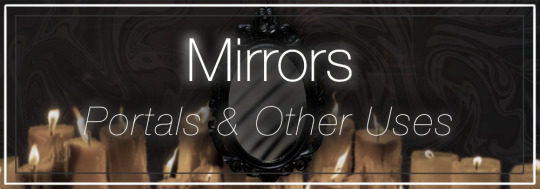
Title: Mirrors: Portals and Uses
Recommended Reading
Altars: Uses & Design
Dimensions & PlanesDualities in Witchcraft
Researching Witchcraft
Spiritwork: First Steps
Basics of Spellcasting
Basics of Warding
Basics of Banishing
Energy Work Fundamentals
Intermediate Energy Work
The Subtle Body
The Wellsource
Correspondences: Research, Creation, & Use
Please note that some information on this post comes from personal experience as well as conversations with my elders and other practitioners.
Introduction
Mirrors harbor a unique and paradoxical role, often existing at the intersection of clarity and obfuscation. Throughout the annals of history, these reflective surfaces have been the subject of mystic fascination and contemplation. Shrouded in a mysterious aura, mirrors are an integral component of various mystical practices across diverse cultures.
A seminal instance is observed within the African Yoruba tradition, where mirrors are emblematic of Oshun, the deity of beauty, love, and prosperity. Here, these reflective surfaces serve as conduits to divine insight, manifesting the ethereal into the perceptible. Parallel to this, in the indigenous cultures of the Amazonian Shipibo-Conibo people, mirrors - often represented by reflective surfaces of water - are perceived as gateways to understanding the complex layers of the universe, thus embodying a significant spiritual tool. Moreover, in many East Asian practices, mirrors carry deep symbolic significance and are fundamental in rituals aiming to ward off malevolent forces. Among the Ainu people of Japan, for instance, mirrors function as amulets, protecting the holder from supernatural harm.

Mirrors as Portals
A ubiquitous yet perplexing facet is the concept of mirrors functioning as portals. These reflective surfaces, more than mere decorative elements or vanity tools, hold a quintessential place in mystic and magical practice, extending beyond their ordinary use to become intermediaries between the unknown and the practitioner. Diving into the understanding of mirrors, one might read about their role as gateways. The duality of mirrors, both reflective and transparent, presents a tantalizing paradox: what they display isn't a mere reflection, but an alternate universe or spiritual plane. This dichotomy positions mirrors as a connective threshold, an aperture between the observable and the unknown, the physical and the mystical. Despite their allure, mirrors necessitate careful handling within a magical context. It is a common misconception that mirrors only function as portals during explicit rituals. However, their latent potential as conduits should not be overlooked. Consequently, it's paramount that mirrors remain shrouded or safeguarded within consecrated spaces to prevent inadvertent connections to unwelcome energies. Approaching this aspect with a measure of respect and precaution is instrumental in maintaining the equilibrium of such spaces.
Historically, the mirror's role as a portal is discernible across a myriad of cultural contexts. In Greek mythology, Narcissus fell victim to his reflection in a pool of water, demonstrating an early symbol of mirrors as deceptive portals to the ego. In Chinese folklore, the mythical creature Nüwa repaired the heavens using a seven-colored stone, comparable to a mirror, again associating these reflective surfaces with cosmic transitions.
Mirrors often represent truth, knowledge, and self-awareness, owing to their reflective properties. However, their potential as portals imbues them with added dimensions of mystery, transformation, and transition. The mirror, in this context, becomes a metaphor for change and personal evolution, presenting a liminal space where the known meets the unknown, thereby offering new possibilities and perspectives.
Given the energetic properties inherent in mirrors, they should always be treated as portals. Their constituent materials - silica and silver - interact in such a way that a subtle, yet potent, energetic field is generated, a field potentially capable of bridging multiple planes. To ensure safety, mirrors should be handled with respect and caution. They should be appropriately covered or warded when not in use, especially within sanctified spaces. It is also recommended to cleanse mirrors regularly to reset their energetic state and prevent any residual energies from accumulating.
Energetic Interactions & Metaphysics
Energetic Interactions
Amid the energetic symphony of the universe, each object reverberates its unique energetic signature, contributing to the collective composition. Mirrors, with their paradoxical and captivating nature, have often been the center of esoteric investigation. This intrigue is rooted not only in their physical attributes but also in their nuanced energetic interactions.
To comprehend the energetic interplay of mirrors, one must first examine the properties of its constituent components. Primarily, mirrors are composed of glass, a substance formed from the supercooling of molten silica into a quasicrystalline structure. Coating the back of this silica-based surface is a thin layer of reflective metal, usually aluminum or silver.
Silica is very insulative, and negentropic, meaning that its natural energetic state eventually resets regardless of influence. It is also Attractive, meaning that it slowly pulls other energetic compounds to itself. Due to the quasicrystalline structure, glass is refractive and enthalpic, meaning that it becomes thermal under pressure- or releases energy. Silver is conductive and repulsive in nature. Due to how silver atoms prefer to arrange themselves (a face-centered cubic lattice) it also tends to be very metastable, meaning that its natural energetic state is not prone to change regardless of energetic interactions. Because the two are constantly next to each other, because of the silver backing, the negentropic nature of the silica causes an energetic cycle of attraction and repulsion, this oscillation combined with the conductive nature of silver and the entropic nature of glass generates a small energetic field. While this is normally negligible, it creates the perfect environment for the propagation of connections between spaces or planes that are out of phase with our own.
The unique composition of mirrors implicates a distinct effect on the ambient energy. Mirrors, with their inherent vibrational resonance, can both pull and push energy, thereby influencing the surrounding energetic atmosphere. The capacity of mirrors to manipulate energy finds practical applications in the sphere of spellwork and energy transmutation. Through their reflective properties, mirrors can serve as effective tools in spells that involve redirection or amplification of energy. They can be used to create energetic boundaries, return energetic influences, or focus and multiply ambient energy and energetic projections.
Common Metaphysics of Mirrors
The mirror, with its intrinsic capacity to reflect, serves as a potent symbol of the Jungian 'Shadow' - the hidden aspects of one's psyche that are often suppressed or ignored. Through the act of looking into a mirror, one is invited to confront and acknowledge these facets, facilitating a journey towards holistic self-awareness. The mirror, in this respect, catalyzes self-reflection and introspection, propelling an individual towards self-understanding and acceptance. Delving into the sphere of mirror magic uncovers its profound connection to personal transformation. The reflective nature of mirrors encapsulates the principle of change, embodying the potential for alteration and transformation. As such, mirror magic can be utilized as a tool for self-development and evolution, offering a means to focus energy towards constructive change. Beyond symbolism and transformation, the metaphysical properties of mirrors warrant exploration. Mirrors, by their construction and function, are potent energetic entities. The amalgamation of silica and metallic elements results in a unique vibrational resonance, enabling the mirror to absorb, store, and emit energy. This energetic characteristic, coupled with the mirror's reflective capacity, amplifies its metaphysical potency, making it an influential tool in various mystical practices. Moreover, the reflective nature of mirrors aligns them with the principle of 'as above, so below', a concept found in various esoteric traditions. This principle speaks to interconnectedness, suggesting that what occurs on one level of reality also happens on another. Mirrors could, therefore, serve as a solid physical replacement for any correspondence necessary.

Divination, Spells, & Ritual
In the enigmatic arena of divination, mirrors command a distinctive presence. Among various techniques, scrying - the act of gazing into a reflective surface to perceive spiritual messages - emerges as a common method of introspection and foreknowledge. This practice unfolds as a tripartite process, encompassing the scrying ritual, technique, and subsequent interpretation.
Scrying, an ancient form of divination, leverages the reflective properties of reflective surfaces, like mirrors, to delve into the psyche, unveil hidden knowledge, or prognosticate future events. This technique transcends conventional sensory perception, engaging instead with subconscious and/or spiritual entities. The mirror functions as a medium, harnessing and focusing the widened attention in order to project images or symbols onto the reflective surface. These visual constructs carry messages from the spiritual domain, providing insights that range from self-understanding to predictive revelations.
Techniques & Rituals for Scrying
Executing mirror scrying necessitates a meticulous approach. Often, the process commences with the preparation of the space and the individual. Creating a tranquil environment, devoid of disruptive elements, facilitates a deeper, unhindered connection with the spiritual plane. Personal preparation includes grounding and centering exercises to align the individual's energy with the ambient energy of the environment. They then place a light source between them and the reflective surface. Once prepared, the practitioner enters a meditative state, allowing their gaze to soften and unfocus while looking into the mirror. This passive observation invites subconscious impressions to surface and be displayed on the mirror. Maintaining an open mind and a receptive state is crucial, as the visions or symbols may not be immediately clear or might require subsequent interpretation.
Interpretation of Images & Symbols in Reflections
Post the scrying experience, the practitioner embarks on the task of interpreting the observed symbols or images. This phase is intrinsically subjective, as the significance of the symbols often rests within the personal context of the observer and their held convictions and correspondences. However, there are common archetypes and symbols that carry collective meanings, which can provide a starting point for interpretation.
For instance, water-themed images might signify movement, emotions, or the unconscious, while an image of a bird might symbolize freedom or spiritual elevation. However, these interpretations are not rigid, and the practitioner must trust their intuition to derive the true message from the symbols. Being able to pull specific concepts from abstraction can be an invaluable tool in this practice. Moreover, it's worth noting that the absence of specific images during scrying does not indicate failure. Sometimes, the experience might be more of an energetic shift or a feeling, which are equally valid forms of divinatory communication.
Examples of mirror spells for different applications
Harnessing the power of mirrors, one can devise a multitude of spells tailored for diverse purposes. One such example pertains to protection, where a mirror can serve as a shield to deflect negative energy. Here, the mirror is positioned facing outward, symbolically repelling unwanted influences, thereby safeguarding the individual or space.
Another practical application can be found in the realm of healing. A mirror, due to its reflective nature, can be utilized to channel and focus healing energy towards a specific target. For instance, an inscription or symbol associated with health could be drawn on the mirror surface. Subsequently, this healing symbol is then "activated" by focusing one's concentration on it, allowing the mirror to magnify the healing intention.
Mirror spells also prove instrumental in the domain of self-improvement. One may write or speak affirmations into a mirror, thereby employing its reflective capability to reinforce positive change. The mirror's surface serves to amplify the affirmation, aiding in its internalization and materialization.
Ritual Practices Involving Mirrors
Mirrors, acting as tools for focus, protection, and transformation. One common ritual involves the use of a mirror as a portal for spiritual communication. In this practice, the mirror is treated as a gateway, a connection point between the physical and spiritual planes. Practitioners may engage in meditation or trance work in front of the mirror, seeking to establish communication with spiritual entities or access deep layers of the subconscious.
Another ritual entails the use of a mirror in a consecration ceremony, where the mirror is "cleansed" of any residual energy and "charged" with a specific purpose. This process involves elements like incense, candles, or natural elements like moonlight, leveraging their specific energetic signatures to cleanse and empower the mirror.
One must, however, proceed with caution when interacting with mirrors in a ritualistic context. Given their potent properties, mirrors must be handled respectfully and carefully. Always ensure that the ritual mirror is properly stored or covered when not in use to prevent any unintended energetic interactions.
Example Ritual That Incorporates Mirrors
Ritual of Mirror Reflection
Objective: This ritual aims to promote self-reflection, growth, and self-awareness. It harnesses the unique properties of mirrors to aid participants in seeing and understanding aspects of themselves more clearly.
Optimal Circumstances: Conduct this ritual during a new moon, a time known for introspection and new beginnings. A quiet, dimly lit space with minimal disturbances is ideal.
Ingredients and Correspondences:
Mirror: Acts as the primary tool for reflection and introspection
(Optional) A bowl
White Candle or electric candle: Represents purity and clarity.
(Optional) Lavender Incense: Used for relaxation and heightening awareness.
(Optional) Salt: Represents grounding and protection.
(Optional) Incense for grounding
(Optional) Offerings for your spirits
Preparation:
Create a clean, sacred space where the ritual will take place.
Place the mirror on a flat surface.
Practice the incantation until you can recall it without breaking your train of thought: “Show me, guide me, reveal the truth inside me.”
(Optional) Place the salt and lavender in a bowl and then set the candle in the bowl, cradled within the mixture to support it.
(Optional) Place the candle between you and the mirror before lighting it.
If the bowl, salt, and lavender is omitted, just place the candle between you and the mirror. Be sure that the candle is in a glass container for fire safety.
Procedure:
Creating and Engaging the Headspace:
Ensure that your space is free from distractions by turning devices off or on silent, taking measures to get pets quiet and happy, notifying other residence that you require some quiet, putting on headphones with music, and setting comfortable lighting.
Use the flame from the candle dance. Let its clarity inspire your mind to remain focused and clear throughout.
(Optional) Affirm to yourself, “Today, I seek a clearer understanding of myself.” if you think it will aid you.
Maintain this headspace by repeatedly returning your focus to the candle's flame and the points of gnosis whenever your mind wanders.
Entering a State of Gnosis:
Light the incense and take a few deep breaths, inhaling the calming scent.
Sit or stand comfortably before the mirror, gazing deeply into your reflection.
Allow any extraneous thoughts to flow out with each exhale.
Gradually move your awareness inwards on your own psyche.
While maintaining equal awareness of each component, break up your psyche into subsequent parts by whatever categorization feels most optimal for you.
Include awareness of your subtle body in your gnosis, as it also plays a role in the psyche.
Take steps to ensure that your state of gnosis is unbroken throughout the spell.
Programming the Energetic Body:
Within your gnosis, move your center of consciousness into your subtle body.
Incorporate your Wellsource into your awareness and how it feeds energy into your subtle body.
Begin to radiate Wellsource energy out of each energy point radially. Be sure that the amount of energy per second is unilateral for each point.
Energetic Constructs:
While maintaining gnosis, reach out and sense the energetic properties and projections from the mirror. It should be a rapidly oscillating field that projects roughly 10 cm -1 m away from the mirror relative to its size. If you’re using a black mirror, stone mirror, or any mirror that doesn’t have a silver backing it will have a different energetic sensation.
(Optional) Incorporating Spirits:
To integrate spirits, whisper a humble request for guidance from trusted spirits and give whatever offerings they prefer. To identify them, look for sensations of warmth, a gentle pressure, or feelings of serenity.
Ensure that you do not demand, but gently request their presence.
Understand that they will help you if they desire, but do not rely on or expect their assistance.
Ritual Action:
Gaze into the mirror, allowing your eyes to defocus slightly. As you do, softly chant or whisper, “Show me, guide me, reveal the truth inside me.”
With each repetition, delve deeper into introspection, understanding the various facets of your being.
Sink your awareness into the components of your psyche. Try not to label them, and just observe them. Trust that your subconscious will bring back what it is you need from the working.
Concluding the Ritual:
Collect the energy you released and send it into the earth.
Thank your spiritual aids, if you called them, and invite them to leave.
Extinguish the candle and clear the space, ensuring to store the mirror safely.
Cleanse the space using whatever means are more comfortable to you.
Note: Always cleanse the mirror after use to reset its energetic state. This can be done by washing it with salt water or vinegar. If you’d like to seal the mirror, draw a sigil on it and/or cover it with a black or white cloth.

Spirit Work
Mirrors, in their multifaceted roles within various esoteric traditions, exhibit a powerful capacity for spirit work. This encompasses a wide spectrum of practices ranging from entity banishment to spirit communication. The exploration of these applications, while deeply intriguing, also necessitates an attitude of respect and careful handling given the potent nature of this work.
Examples of Mirrors in Use for Spirit Work
In several indigenous cultures, mirrors are employed for spirit work, acting as conduits between the physical world and the spiritual realm. For instance, among the indigenous Huichol people of Mexico, mirrors are often integrated into shamanistic practices to facilitate communication with ancestral spirits. This specific usage is chronicled in "The Huichol: A Culture Walking Towards the Light" by Susana Valadez and "Shamanism and Spirituality in Therapeutic Practice" by Christa Mackinnon.
In Asia, particularly within the indigenous Ainu community of Japan, mirrors, known as "Iyomante," are considered sacred objects that bridge the gap between humans and "Kamuy" (divine beings). Details of this practice can be found in "The Ainu and their Folklore" by John Batchelor and "Ainu: Spirit of a Northern People" by William Fitzhugh and Chisato Dubreuil.
Using Mirrors for Banishing
Mirrors also play a role in the banishment of unwanted entities. The rationale behind this practice is that the mirror's reflective surface 'returns' the entity's energy back to itself, which can prove disorientating or repelling for the entity. It can also act as a portal to another spiritual plane through which an entity can be sent to. A particular method involves placing the mirror with the reflective side facing outwards towards the direction from which the negative energy is perceived to originate. During this process, the practitioner maintains a focused state, using projections from the subtle body to direct the unwanted energy into the mirror.
Using Mirrors for Spirit Communication
The reflective nature of mirrors has led to their usage as tools for spirit communication, serving as a medium through which messages from the spiritual realm can be received. This practice often involves mirror gazing or scrying, where the practitioner enters a meditative state and focuses on the mirror's surface, inviting communication from spirits.
One notable example is the "Psychomanteum," a mirrored chamber used for contacting spirits of the departed, popularized by Dr. Raymond Moody, author of "Reunions: Visionary Encounters With Departed Loved Ones". This technique requires a carefully controlled environment and preparation to facilitate spirit communication. It's recommended for only experienced practitioners or under the guidance of a seasoned professional. It is important to note that while mirrors can be effective tools in spirit work, some methodologies may not work for everyone due their vagueness or whether they’re writing from a personal narrative.

Patreon Shoutouts!
Megan Kipp
Jinsu
Ing Mar
Cosmicauquamarie
Elizebeth T.
Ash
Thank you for your continued support! My patrons help me maintain the drive to create content and help me keep food in my pantry.
My patrons of Mystic tier and higher had access to this article a week before it was public! To see other perks of supporting me, click here!
This article was reviewed and edited by ChatGPT
269 notes
·
View notes
Text
Steeped in tradition, The Yoruba masquerade culture is a mesmerizing tapestry of history, art, and spirituality.
158 notes
·
View notes
Text
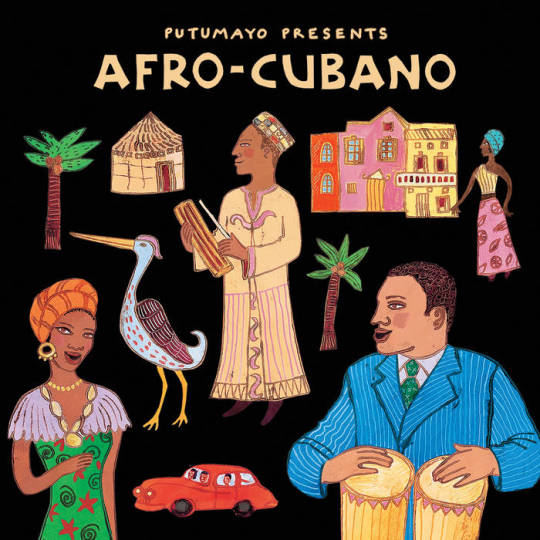
Music of African heritage in Cuba derives from the musical traditions of the many ethnic groups from different parts of West and Central Africa that were brought to Cuba as slaves between the 16th and 19th centuries. Members of some of these groups formed their own ethnic associations or cabildos, in which cultural traditions were conserved, including musical ones. Music of African heritage, along with considerable Iberian (Spanish) musical elements, forms the fulcrum of Cuban music.
Much of this music is associated with traditional African religion – Lucumi, Palo, and others – and preserves the languages formerly used in the African homelands. The music is passed on by oral tradition and is often performed in private gatherings difficult for outsiders to access. Lacking melodic instruments, the music instead features polyrhythmic percussion, voice (call-and-response), and dance. As with other musically renowned New World nations such as the United States, Brazil and Jamaica, Cuban music represents a profound African musical heritage.

Clearly, the origin of African groups in Cuba is due to the island's long history of slavery. Compared to the USA, slavery started in Cuba much earlier and continued for decades afterwards. Cuba was the last country in the Americas to abolish the importation of slaves, and the second last to free the slaves. In 1807 the British Parliament outlawed slavery, and from then on the British Navy acted to intercept Portuguese and Spanish slave ships. By 1860 the trade with Cuba was almost extinguished; the last slave ship to Cuba was in 1873. The abolition of slavery was announced by the Spanish Crown in 1880, and put into effect in 1886. Two years later, Brazil abolished slavery.
Although the exact number of slaves from each African culture will never be known, most came from one of these groups, which are listed in rough order of their cultural impact in Cuba:
The Congolese from the Congo Basin and SW Africa. Many ethnic groups were involved, all called Congos in Cuba. Their religion is called Palo. Probably the most numerous group, with a huge influence on Cuban music.
The Oyó or Yoruba from modern Nigeria, known in Cuba as Lucumí. Their religion is known as Regla de Ocha (roughly, 'the way of the spirits') and its syncretic version is known as Santería. Culturally of great significance.
The Kalabars from the Southeastern part of Nigeria and also in some part of Cameroon, whom were taken from the Bight of Biafra. These sub Igbo and Ijaw groups are known in Cuba as Carabali,and their religious organization as Abakuá. The street name for them in Cuba was Ñáñigos.
The Dahomey, from Benin. They were the Fon, known as Arará in Cuba. The Dahomeys were a powerful group who practised human sacrifice and slavery long before Europeans arrived, and allegedly even more so during the Atlantic slave trade.
Haiti immigrants to Cuba arrived at various times up to the present day. Leaving aside the French, who also came, the Africans from Haiti were a mixture of groups who usually spoke creolized French: and religion was known as vodú.
From part of modern Liberia and Côte d'Ivoire came the Gangá.
Senegambian people (Senegal, the Gambia), but including many brought from Sudan by the Arab slavers, were known by a catch-all word: Mandinga. The famous musical phrase Kikiribu Mandinga!��refers to them.
Subsequent organization
The roots of most Afro-Cuban musical forms lie in the cabildos, self-organized social clubs for the African slaves, and separate cabildos for separate cultures. The cabildos were formed mainly from four groups: the Yoruba (the Lucumi in Cuba); the Congolese (Palo in Cuba); Dahomey (the Fon or Arará). Other cultures were undoubtedly present, more even than listed above, but in smaller numbers, and they did not leave such a distinctive presence.
Cabildos preserved African cultural traditions, even after the abolition of slavery in 1886. At the same time, African religions were transmitted from generation to generation throughout Cuba, Haiti, other islands and Brazil. These religions, which had a similar but not identical structure, were known as Lucumi or Regla de Ocha if they derived from the Yoruba, Palo from Central Africa, Vodú from Haiti, and so on. The term Santería was first introduced to account for the way African spirits were joined to Catholic saints, especially by people who were both baptized and initiated, and so were genuine members of both groups. Outsiders picked up the word and have tended to use it somewhat indiscriminately. It has become a kind of catch-all word, rather like salsa in music.
The ñáñigos in Cuba or Carabali in their secret Abakuá societies, were one of the most terrifying groups; even other blacks were afraid of them:
Girl, don't tell me about the ñáñigos! They were bad. The carabali was evil down to his guts. And the ñáñigos from back in the day when I was a chick, weren't like the ones today... they kept their secret, like in Africa.
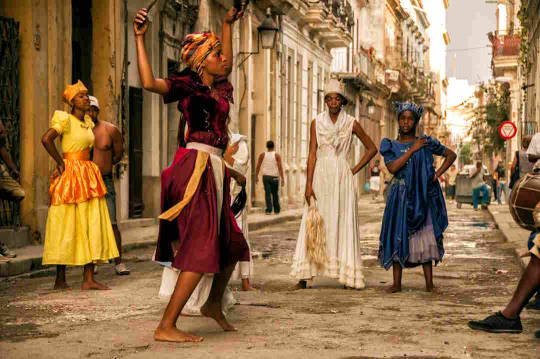
African sacred music in Cuba
All these African cultures had musical traditions, which survive erratically to the present day, not always in detail, but in the general style. The best preserved are the African polytheistic religions, where, in Cuba at least, the instruments, the language, the chants, the dances and their interpretations are quite well preserved. In few or no other American countries are the religious ceremonies conducted in the old language(s) of Africa, as they are at least in Lucumí ceremonies, though of course, back in Africa the language has moved on. What unifies all genuine forms of African music is the unity of polyrhythmic percussion, voice (call-and-response) and dance in well-defined social settings, and the absence of melodic instruments of an Arabic or European kind.
Not until after the Second World War do we find detailed printed descriptions or recordings of African sacred music in Cuba. Inside the cults, music, song, dance and ceremony were (and still are) learnt by heart by means of demonstration, including such ceremonial procedures conducted in an African language. The experiences were private to the initiated, until the work of the ethnologist Fernando Ortíz, who devoted a large part of his life to investigating the influence of African culture in Cuba. The first detailed transcription of percussion, song and chants are to be found in his great works.
There are now many recordings offering a selection of pieces in praise of, or prayers to, the orishas. Much of the ceremonial procedures are still hidden from the eyes of outsiders, though some descriptions in words exist.
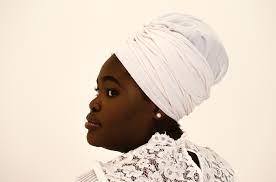
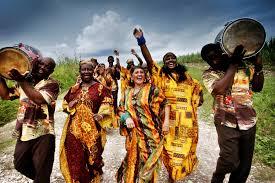
Yoruba and Congolese rituals
Main articles: Yoruba people, Lucumi religion, Kongo people, Palo (religion), and Batá
Religious traditions of African origin have survived in Cuba, and are the basis of ritual music, song and dance quite distinct from the secular music and dance. The religion of Yoruban origin is known as Lucumí or Regla de Ocha; the religion of Congolese origin is known as Palo, as in palos del monte.[11] There are also, in the Oriente region, forms of Haitian ritual together with its own instruments and music.
In Lucumi ceremonies, consecrated batá drums are played at ceremonies, and gourd ensembles called abwe. In the 1950s, a collection of Havana-area batá drummers called Santero helped bring Lucumí styles into mainstream Cuban music, while artists like Mezcla, with the lucumí singer Lázaro Ros, melded the style with other forms, including zouk.
The Congo cabildo uses yuka drums, as well as gallos (a form of song contest), makuta and mani dances. The latter is related to the Brazilian martial dance capoeira
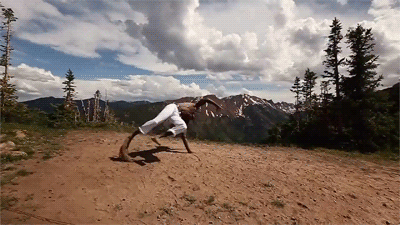
#african#afrakan#kemetic dreams#africans#brownskin#brown skin#afrakans#african culture#fitness#afrakan spirituality#afro cuban music#afro cuban#igbo#yoruba#congo#african music
123 notes
·
View notes
Text
Black Horror and Portrayal of Occult
Black horror has consistently been entranced with magic and mysticism, portraying African cultural aesthetics such as Vodou and ancestor worship. Many Black horror movies include themes of possession, occult, and ritualism which are portrayed differently from other horror because of a unique and stigmatized cultural lens.

Eve’s Bayou is interesting in its portrayal of Vodou and mysticism, as supernatural aspects of Black Southern life seem to be normalized. There are a range of different powers at play within the film, such as with Aunt Mozelle who is simultaneously blessed with foresight and plagued by a curse that has killed all her past lovers in varying gruesome fashion. The film’s main character, Eve, is also clairvoyant herself, and recruits the help of a Vodou lady in order to kill her promiscuous father. Eve is played by Jurnee Smollet, who also happens to star in Lovecraft Country, another show which centers itself around the occult.
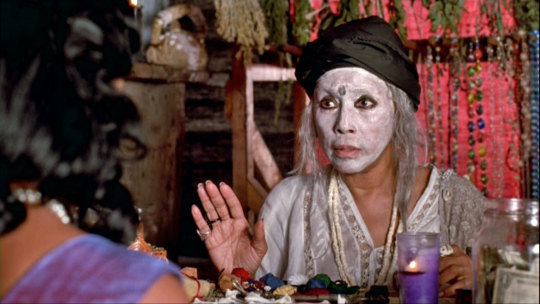
Magic and mysticism is also very present in Blaxploitation horror, such as Scream Blacula Scream with its revival of Blacula via Vodou, or Sugar Hill, which makes use of the Vodou zombie trope through a thrilling tale of revenge. You also have the film, Abby, a horror film in which a woman is possessed by the Yoruba sex spirit, Eshu. Blaxploitation horror also includes portrayals of Black vampires and ghosts, heavy with themes of retribution, racism, and other social issues. These Blaxploitation films, while not really the best portrayal of African occult practices, are unique from other horror in that the horror is specifically of Black origin, again, an example of how Black horror looks at magic and mysticism through a cultural lens. This is in contrast to Western horror flicks, which seem to revolve around the general white sphere and look at magic and mysticism through a strictly gimmicky lens (vampires not as cultural figures, but as marketable boogeymen).

Themes of magic and mysticism can also be found in films such as Get Out, Candyman (both the originals and the sequel), and His House. Get Out’s usage of the mysticism is much more subtle than the rest, but it can be found in the beginning with the usage of the song, Sikiliza Kwa Wahenga, a Swahili song which Jordan Peele states is mean to represent Chris’s ancestors warning him to “get out”. Candyman’s usage is a bit more obvious, with magic and mysticism represented through the oral passage of Candyman as urban legend, which is explored in the 2021 sequel as a simultaneous representation of oral traditions of old, as well as generational trauma from racialized killings of Black men. Lastly, His House makes use of the apeth, otherwise known as a Night Witch in Dinka culture, a creature by which they must repay a debt to after abducting a child and getting said child killed.

#his house#get out#black horror films#horror movies#horror films#lovecraft country#candyman#sugar hill#eves bayou#blacula#blaxploitation#abby
487 notes
·
View notes